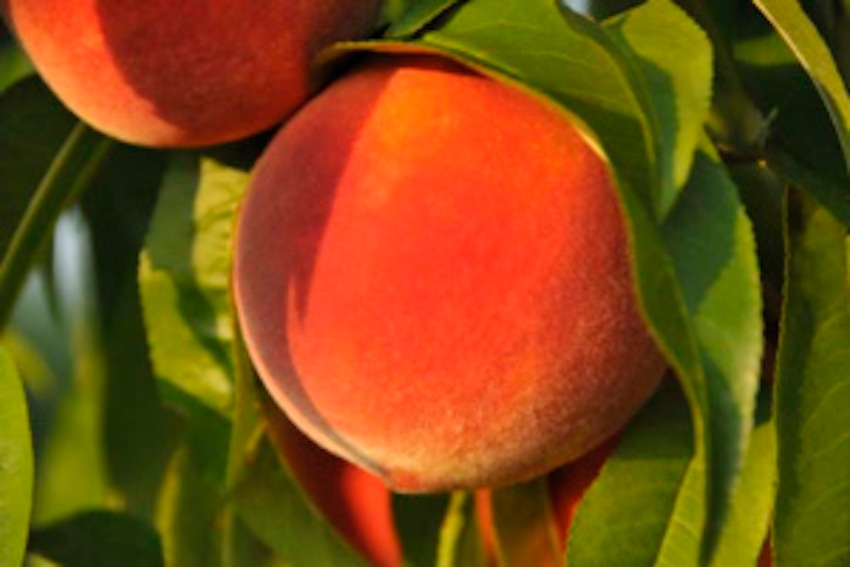November 22, 2017

Eight thousand nine hundred and seven samples later, the verdict is in: There’s no hint of plum pox in South Carolina.
Reaching the conclusion wasn’t easy, but the search was essential. Plum pox is the most devastating viral disease of stone fruit in the world — and a potential disaster for South Carolina’s important peach business.
Once a tree is infected, there is no treatment or cure. The only way to stop the spread is to kill infected trees.
“This virus could decimate the peach industry in our state,” said Steven Long, assistant director of the Department of Plant Industry at Clemson University (DPI), an agricultural regulatory agency charged with the responsibility to monitor and combat invasive pests of plants in South Carolina.
“If plum pox were to get established here it could have a major impact on farmers,” Long said. “It’s essential that if it arrives here we find it early so we can eradicate it early. That is the only way we can protect the farmer and protect the quality of our peach industry.”
That’s why 14 Clemson University inspectors meticulously hand-picked four peach leaves for every sample — a total of 35,628 — and packed them for shipment to a U.S. Department of Agriculture lab for analysis.
When the results returned, scientists found precisely what the inspectors and peach farmers were looking for: nothing.
“USDA really began surveying in earnest nationwide after the disease appeared in the Middle Atlantic states a little over 10 years ago,” said Gavin Berry, lead inspector for the DPI team. “We did our first survey back then. In the past 10 years or so we’ve added it to our annual sampling, but this is the first intensive sampling statewide since 2005,” a project made possible through special funding in the most recent U.S. Farm Bill.
As killers go, plum pox is a young one. It wasn’t discovered at all until 1915, tucked away in an orchard in Bulgaria. Since then it is known to have spread across Europe and into the Middle East, North Africa, India, Chile, Canada and the United States.
Its first appearance in North America came in 1999 in an orchard in Adams County, Pennsylvania, home of the Gettysburg battlefield and the South Mountain Fruit Belt, a 20,000-acre collection of orchards and the largest producer of apples and peaches in the Keystone State.
The stakes are high wherever plum pox wanders, but especially so if it finds its way to South Carolina. Our peach orchards, which rank second only to California in annual production, dwarf those of Pennsylvania. And despite its claim to the “Peach State” moniker, even Georgia falls short as South Carolina routinely produces twice or even three times as many peaches as its neighbor to the south.
Worldwide, plum pox is estimated to cost the peach, plum and apricot industry more than $600 million per year. But when the virus first starts to spread, it can slip by unnoticed. Sometimes infected trees show no symptoms at all. To confirm an infection in these trees, sample plant tissue must undergo molecular diagnostic tests like the ones used on the S.C. samples.
The stealthy virus employs multiple modes of transportation as it journeys to new stone fruit hosts: peaches, nectarines, apricots, plums, almonds, cherries and some ornamental species in the same family.
Plum pox can be transmitted long distances in live nursery stock and by budding and grafting healthy plants with infected plant material. The virus also can hitchhike on more than 20 species of aphids — tiny bugs that sip the sap of vegetation.
Plum pox poses no health danger to those of us who savor the flavor of a sweet, succulent South Carolina peach in the summertime. However, it can slash yields in infected orchards and cause deformities and acidity in the fruit that may make it unmarketable. Plum pox can also weaken its victim, making it more vulnerable to other diseases.
“Early detection is so important,” Long said. “If you catch it early, only a few acres might be quarantined. But if it gets well established, you may be talking thousands of acres.”
Plum pox is just one of the pests DPI officials are on the lookout for across the state. How many are there?
“Hundreds, maybe thousands,” Long said. “The list of state-regulated pests goes over a hundred. Then we have the federally regulated noxious weeds, diseases and insects. We’re inspecting for common ones as well, things that can be detrimental to crops and ornamentals. We also inspect nurseries, to ensure that quality products are being sold, as well as exports out of the state, which has helped open up new markets such as Mexico for our peaches.”
“DPI and the South Carolina Peach Council worked for an extended period of time to assess the risk of shipping peaches to Mexico,” Berry explained. “We used orchard traps for plum curculio, oriental fruit moth and several other pests of concern. What we were able to prove was that the best management practices the Southeast already uses are keeping threshold levels low enough that the pests of concern will not follow the pathway of shipping peaches to Mexico.”
With so many potential pests, DPI inspectors can always use a new set of eyeballs.
“We ask citizens to be on the lookout for pests, too, and report them to county agents in the Clemson Extension Service,” Long said. “We work hand-in-hand with Extension, and farmers and homeowners often can find a problem quicker than we can.”
About the Author(s)
You May Also Like




